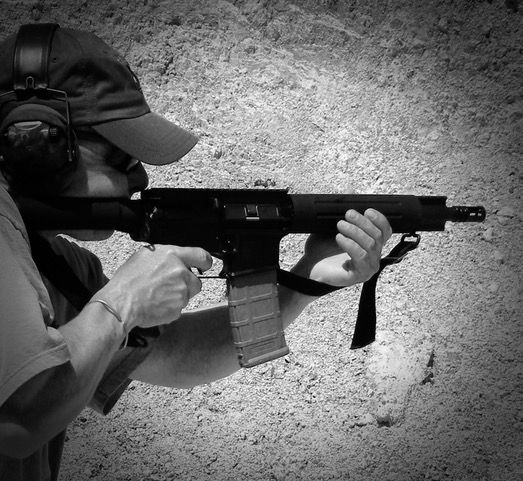Editor’s Note: None of what follows is “legal advice.” We’re not engaged in the practice of law or of giving legal advice. It’s fair to say that engaging in the “Proposed Rule Making” with a cogent, clear, original and non-profane critique to the website or mailing address won’t hurt – as long as you follow their guidelines for submission.

Putting something off until “tomorrow” is rarely a good idea. As we know, ‘tomorrow’ never actually arrives. Plus, a delay in taking some type of action may mean you never again get the opportunity. The only thing we know for sure is that everything changes. What might be possible today becomes unfeasible tomorrow. A perfect example of this is the AR “pistol.”
Back in the mid 1980’s I had the opportunity to buy a full-auto H&K MP 5, with a dozen magazines, the official H&K carry bag and a suppressor. At that time the $1800 price tag seemed like too much – there were other full autos like M16s that were cheaper - plus I would have to apply for and pay the stamp fee - $400 for both gun and can. I’d wait until it was more affordable. In 1986 the rules changed. No more full auto weapons could be manufactured for sale to the civilian market. You can still buy them – as long as the firearm was made prior to ’86 – but the same MP5 is now north of $40-50,000. I could sell every firearm I own and still come up way short of that cost. The opportunity was lost.
The ATF has published their proposals on the much-debated AR “pistol” and “arm braces.” If put into law the new regulations completely change the definition on what an AR pistol “is.” At one time, the debate on AR pistols was whether or not you could place the arm brace on the shoulder when firing. This was always a little murky, with mixed signals coming from the ATF.
The new definition is based on a point system and considers every factor of the weapon. Weight and total length are considered; anything too heavy or too long to be fired with one hand adds points. Length of pull is another element. A weapon using a carbine buffer tube, or one that’s adjustable for length isn’t a pistol. Standard AR type sights, which are designed for the rear sight to be close to the eye are “rifle” sights, as opposed to “pistol” sights. The design of the brace, intent and how it functions are major factors. There are plenty more details, too many to list here. Since it will be your job to know what will be legal or illegal read the full proposal here: https://www.federalregister.gov/documents/2021/06/10/2021-12176/factoring-criteria-for-firearms-with-attached-stabilizing-braces . (The ATF is taking comments on the new proposals now.)
Your options will be to turn the weapon in, modify your existing pistol to fit the new guidelines, register it as a short barrel rifle - a $200 stamp for your “new” Class III weapon – or become a criminal ‘guilty’ of a federal offense. Only a couple of these are options. Of course, once you register your pistol as a short barrel rifle you can install your favorite stock and rock on. You just can’t travel with it across state lines without federal ‘permission.’
Most of us knew there were gray areas on AR pistols, and we all played along. Now, the rules are probably going to change. It will cost all of us. Most owners I know have more than one AR pistol. It will affect the AR market. No more sales, and AR pistols will require a Class III license to make and sell commercially. You won’t be able to trade pistols with your buddy.
Prior to his election, Biden’s website outlined their plans for firearms, so none of this should come as a surprise. And, this is just the beginning of more restrictions on various aspects of gun ownership for our American Republic.
Tiger McKee is director of Shootrite Firearms Academy. He is the author of The Book of Two Guns, AR-15 Skills and Drills, has a regular column in American Handgunner and makes some cool knives and custom revolvers. Visit Shootrite’s Facebook page for other details.
